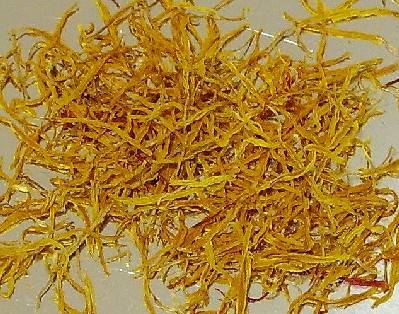Greek name and pronunciation:
zafora or safrani, ζαφορά or σαφράνι, pronounced zah-for-AH or sah-FRAH-nee
At the market:
Saffron is sold in small packs of threads or in powdered form.
Physical characteristics:
Dried saffron threads range from orange-red to yellow, are between 1″ – 1.5″ long, and are shaped like pieces of very thin and cooked pasta that have dried and slightly curled. The best saffron has an aroma similar to honey and a flavor compared to bitter honey.
Usage:
In Greek cooking, saffron is used in salads, sauces for potatoes and vegetables, rice, soups, and boiled fish dishes. It is well known in the Mediterranean cuisines. Only a small amount (a few threads) is needed to impart the color and aroma.
Substitutes:
turmeric (use 4 times as much – for color only), or food coloring
Origin, History, and Mythology:
In Greek mythology, the mortal Crocos fell in love with the nymph Smilax. Smilax rejected his amorous advances and turned him into a beautiful purple crocus flower.Though imported primarily from Spain, Saffron is also cultivated in England, India, Turkey, China and Iran.In India, saffron’s color is considered the epitome of beauty – it is the official color of Buddhist robes.
The name saffron comes from the Arabic word for saffron – “za’fran” – meaning “to be or to become yellow.”

